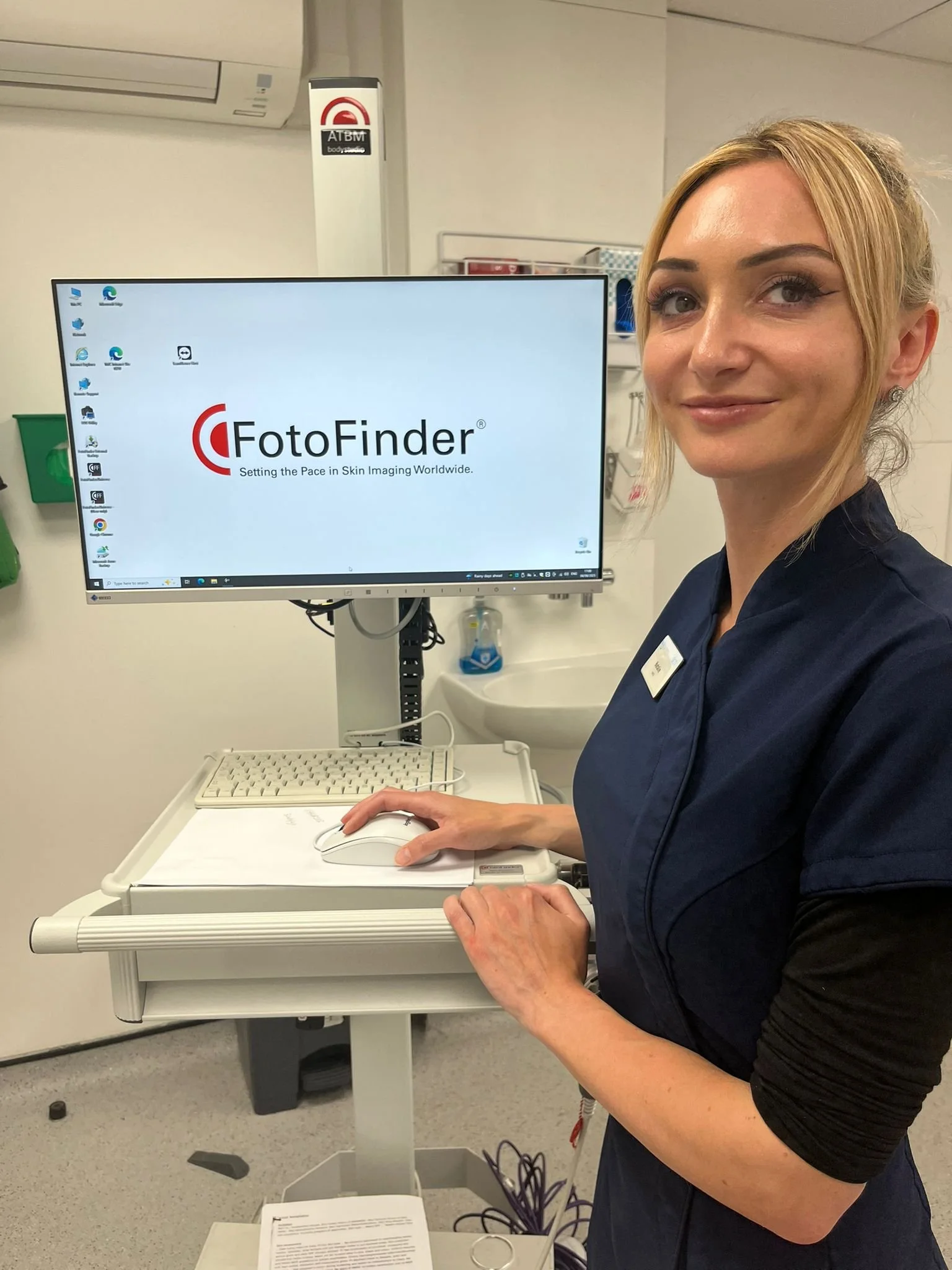Health Notes: Mole Mapping with FotoFinder at SK:N Clinics
This week, Jo Fairley reports on an important skin check-up – and suggests it should be part of everyone’s health maintenance programme
Regular readers of this column know that it’s Sarah’s ‘baby’ – award-winning health writer that she is. But I wanted to report first-hand on a visit to have a dodgy-looking mole checked out, late this summer.
I had become aware of a rough patch of skin on my back, just above the bra line on the right-hand side. Trouble is… I couldn’t really see it. So, out of sight, out of mind. I honestly thought it was a patch of eczema, because that’s what it felt like – and (slapped wrists) didn’t bother to check in any sort of ‘rear-view mirror.’
But it wasn’t going away. So I asked my husband to photograph it on my phone. I honestly didn’t like the look: little brown outcrops on the edge of a patch of grey-beige, rough skin. But as it happens, this coincided with an e-mail from SK:N Clinics about mole checking – so I took it as a sign, and booked in. Off I duly toddled from Hastings to Brighton, to their location there. (There are other SK:N Clinic locations offering the service.)
Natalie with the FotoFinder that she used on Jo
I was welcomed by a very friendly, experienced nurse, Natalie, who invited me to strip down to bra and pants. She then proceeded to scan me with a camera: front, back, sides, with a camera zoning in on anything that I might be a little worried about. That meant not only my rough patch on the back, but also a mole on my face that has slowly increased in size, with a slightly irregular edge.
Now, I don’t sun worship. In fact, I’m the greatest advocate of lying in the shade with a book that you’ll ever find. But I do, like most people, get incidental sun exposure, and I certainly can’t reach the bit of my back on which that iffy patch of skin could be found. We chatted about my sun history, overall health, concerns.
The high-tech FotoFinder in action
On the wall of the clinic was a chart of moles and skin irregularities, meanwhile, which did look quite reassuring. There was a photographic matrix of moles and other eruptions, with an indication as to whether they might be malignant or benign. My patch looked like it belonged on the benign list – but better safe than sorry, I figured.
The digital imaging scan itself – using the FotoFinder device – took no more than a quarter of an hour, before I headed back to the station and returned home. I turned side on, other side on, lifted my arms… just to ensure all areas were properly assessed.
A week later, the call came: nothing to worry about. That troublesome patch of skin on my back was an age spot/sun spot (which would be easy to remove, if I chose). None of the other close-ups that Natalie had taken were anything to worry about, either – a massive weight off my mind. If there had been anything to concern the dermatologist, meanwhile, I could have booked a Mole Diagnostic Report and a biopsy – and fast.
But I’ll be budgeting to go back annually, now. With the ‘map’ that Natalie created, there is something reliable to benchmark as I get older, to check whether anything’s changed shape or colour or just grown. And, as Natalie explained, this is especially useful for backs, where mole changes too often go unnoticed.
And oh, the relief of having this little scare… behind me.
Mole Mapping with Fotofinder at SK:N Clinics/from £300 – find out more or book here




